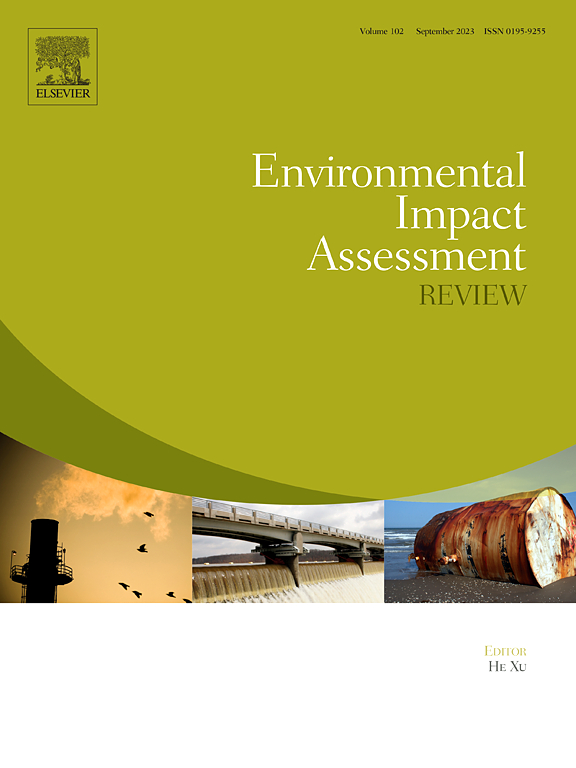Discerning changes in carbon emission intensity of cultivated land utilization since agricultural green transformation: Based on the motivation-opportunity-ability (MOA) framework
IF 11.2
1区 社会学
Q1 ENVIRONMENTAL STUDIES
引用次数: 0
Abstract
Dynamic changes in the carbon emission intensity of cultivated land utilization (CEICLU) have important impacts on food security and “dual carbon” goals. We used benchmark regression models, Moran's index, and spatial Durbin's model to explore the impact and spatial effects of agricultural green transformation (AGT) on China's major grain-producing areas (MGPA), major grain-selling areas (MGSA), and production and sales balance areas (PASBA) on CEICLU from 2006 to 2022. The motivation-opportunity-ability (MOA) analysis framework provides a comprehensive approach to explain the mechanism and construct indicators from the perspective of cultivated land production entities (CLPEs). Our results showed that (1) from 2006 to 2022, China's AGTL increased from 0.168 to 0.336. The spatial differences in AGTL are significant, with those in the MGSA being the greatest, followed by those in the MGPA and PASBA. (2) The increase in carbon emissions from cultivated land use in China slowed, while that in the CEICLU decreased from 2.345 t/104 yuan to 0.717 t/104 yuan. The MGPA, MGSA and PASBA showed a downward trend in the CEICLU district. (3) The increase in AGTL in China significantly inhibited CEICLU. The inhibitory effect shows a decreasing pattern of MGSA, MGPA, and PASBA between regions. (4) There was a significant spatial spillover effect of Chinese AGTL on the inhibitory effect of CEICLU. This spillover effect is crucial in the MGPA and PASBA but not in the MGSA. Based on the results, a policy reference is provided for the differentiated regulation of the low-carbon utilization behavior of the CLPE in different food production areas.
农业绿色转型以来耕地利用碳排放强度变化识别——基于动机-机会-能力(MOA)框架
耕地利用碳排放强度的动态变化对粮食安全和“双碳”目标具有重要影响。利用基准回归模型、Moran’s指数和空间Durbin’s模型,探讨了2006 - 2022年农业绿色转型对中国粮食主产区(MGPA)、粮食主销区(MGSA)和产销平衡区(PASBA)的影响和空间效应。动机-机会-能力(MOA)分析框架提供了从耕地生产主体角度解释其机制和构建指标的综合途径。结果表明:(1)从2006年到2022年,中国的AGTL从0.168上升到0.336。AGTL的空间差异显著,其中MGSA的空间差异最大,其次是MGPA和PASBA。(2)中国耕地利用碳排放增速放缓,中国大陆地区耕地利用碳排放增速从2.345 t/104元下降至0.717 t/104元。MGPA、MGSA和PASBA在CEICLU地区呈下降趋势。(3)中国地区AGTL的增加显著抑制了CEICLU。抑制作用表现为MGSA、MGPA和PASBA在不同区域间呈下降趋势。(4)中国AGTL对CEICLU的抑制效应存在显著的空间溢出效应。这种溢出效应在MGPA和PASBA中至关重要,但在MGSA中则不然。研究结果为不同粮食产区对CLPE低碳利用行为的差别化监管提供政策参考。
本文章由计算机程序翻译,如有差异,请以英文原文为准。
求助全文
约1分钟内获得全文
求助全文
来源期刊

Environmental Impact Assessment Review
ENVIRONMENTAL STUDIES-
CiteScore
12.60
自引率
10.10%
发文量
200
审稿时长
33 days
期刊介绍:
Environmental Impact Assessment Review is an interdisciplinary journal that serves a global audience of practitioners, policymakers, and academics involved in assessing the environmental impact of policies, projects, processes, and products. The journal focuses on innovative theory and practice in environmental impact assessment (EIA). Papers are expected to present innovative ideas, be topical, and coherent. The journal emphasizes concepts, methods, techniques, approaches, and systems related to EIA theory and practice.
 求助内容:
求助内容: 应助结果提醒方式:
应助结果提醒方式:


